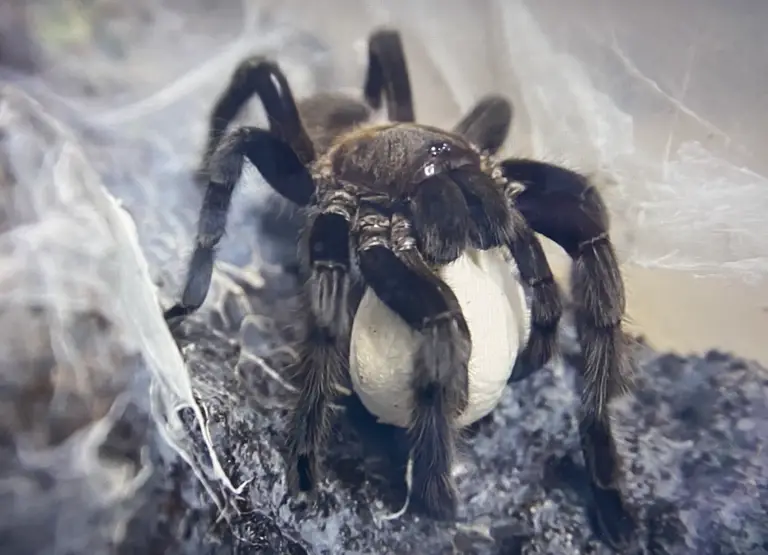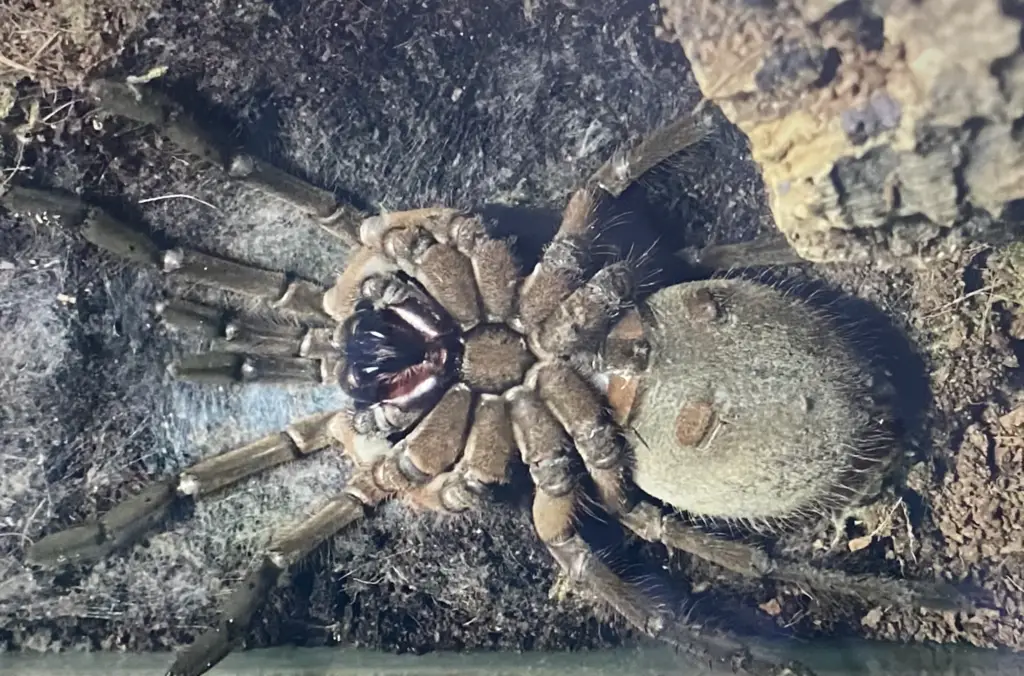Life Cycle of Tarantulas
Like most spider species, a tarantula’s life will consist of three main stages: eggs, spiderlings, and adults. These stages are similar to most other spider species, but tarantulas can live a lot longer than most, so each stage could be extended slightly.
To gain a better understanding of a tarantula’s life cycle, read on.
Tarantula Lifespan
For tarantulas, how long they live varies depending on whether they are male or female, as well as the species. On average, a female tarantula will outlive its male counterpart; females can live up to 25 years, while a male tarantula lives between seven to eight years. However, some tarantulas will only live for six months to a year.
How Long Do Pet Tarantulas Live?
Pet tarantulas, if cared for correctly, can outlive the average dog or cat. In fact, in comparison to other spider species, which usually only live up to two years, tarantulas have an extraordinarily long lifespan of over 20 years in captivity. Due to the pet tarantula lifespan, potential tarantula keepers must be prepared for a long-term commitment depending on the chosen species of pet tarantula.
Life Stages of a Tarantula
The life of a tarantula can be divided into three stages: eggs, spiderlings, and adults. The length of each stage will vary depending on the specific species and other factors, such as food supply, habitat, and so on.
Eggs
This is the first stage of a tarantula’s life cycle. The eggs will either develop in the female tarantula’s body or in an egg sac the female carries between her front legs. Once the tarantula eggs have been laid, the egg sac, which resembles a silken cocoon, will act as a protective layer. Large tarantulas will lay more eggs, with some species laying up to 3,000 eggs.
The tarantula egg sac is an essential feature, as several animals and insects prey upon their eggs. Tarantulas do this by crisscrossing the silken fibres to create a tough outer coating; some species, such as the Goliath Birdeater (Theraphosa blondi), will even add urticating hairs as extra protection. This cocoon will also insulate the eggs against temperature fluctuations.
For some species, the female tarantula will continue carrying the egg sac to tend to her eggs and, eventually, spiderlings. If she does not carry the egg sac, she will find a safe area to hide it from predators; some females, if they are a ground-dwelling species, will do this in their burrows. Terrestrial or tree-dwelling tarantulas will find other safe places to hide their egg sacs.
The eggs will hatch in two to three weeks. A female tarantula might use its fangs to tear the egg sac open and release the spiderlings.
Double Clutches
Several egg sacs, or “clutches,” can be laid from a single mating. Several species of tarantulas are known for double clutching, in which the female is fertilized by the male’s sperm once, and then the remaining sperm is used at a later time. Scorpions also produce multiple clutches from one mating.
It is still unknown whether this behavior is widespread in tarantulas or other spiders, but environmental conditions appear to influence it.
Phantom Egg Sacs
Infertile egg sacs, otherwise known as phantom egg sacs, can happen from time to time when a female lays eggs without mating with a male. This is more common for young adult tarantulas. It can also happen if a female has mated with an older male tarantula, especially if it is near the end of its lifespan.
A tarantula that has laid infertile eggs will either abandon, discard, or eat them, and the latter can provide beneficial nutrients. However, this might be some time after laying the eggs; some female tarantulas will guard their infertile egg sacs until it becomes clear that no eggs are hatching.

Spiderlings
Spiderlings, also known as baby tarantulas, are stage two of the tarantula’s average lifespan. Due to their small size, tarantula slings are incredibly delicate and require nurturing, which can be provided by their mother, depending on the species.
For the first few weeks after hatching, many species will stay safe near their mother as spiderlings; this might be in the mother’s burrow or dispersed in the web. This is usually for the first few molts. Not all tarantula spiderlings will remain with the adult female, though, as certain species will make their own way early on. At this stage, baby tarantulas will begin to look like miniature versions of their species.
The spiderlings will begin to disperse after the first two or three molts, which is vital; they will eventually begin to see each other as threats and food sources if kept in the same space for too long.
Arboreal spiderlings are usually larger than terrestrial or burrowing species. This is thought to relate to the size of prey each tarantula would hunt in its ideal habitat; there are smaller prey to eat on the ground, while the potential food sources for tree-dwelling species will vary in size.
To grow, a tarantula spiderling will undergo several molts to reach maturity. Molting is the process of shedding the spider’s exoskeleton as it grows larger. For young spiders, molting can take place monthly; each molt can last a few hours to a full day.

Adults
Tarantula can take months or even years to mature, which is why their lifespans can be so long. The American desert species, like the Texas Brown tarantula (Aphonopelma hentzi), will mature within seven to ten years, while those living in tropical forests only require three to four years to reach adulthood. Adult female tarantulas will continue to molt every year or so, but males might only molt once after maturing due to their short lifespans.
The tarantula’s adult size mainly depends on its species. Females are often larger than males; for example, a female Chilean Rose Hair tarantula (Grammostola rosea) will have a leg span of five inches compared to three and a half inches for a male. Yet, a female Brazilian White Knee tarantula (Acanthoscurria geniculata) can be even larger than the Chilean Rose Hair female with a leg span of eight inches.
As previously mentioned, the average lifespan of a tarantula will also depend on its species.
Certain species of spiders will die shortly after laying eggs, but not female tarantulas. Much like the wolf spider, they put time into caring for their eggs and spiderlings, ensuring they receive the right humidity and temperature, before their young go off on their own. Male tarantulas, on the other hand, may die after mating due to the females’ sexual cannabilism; the Greenbottle Blue tarantula (Chromatopelma cyaneopubescens), for example, is well-known for being aggressive towards other tarantulas.
After a successful mating, the female will require regular feedings and the correct conditions, such as temperature and humidity levels, to begin egg sac production. It can take weeks or even months before the eggs are laid.
Males will continue to mate with multiple female tarantulas throughout their lives until they die of old age or a female eats them.
